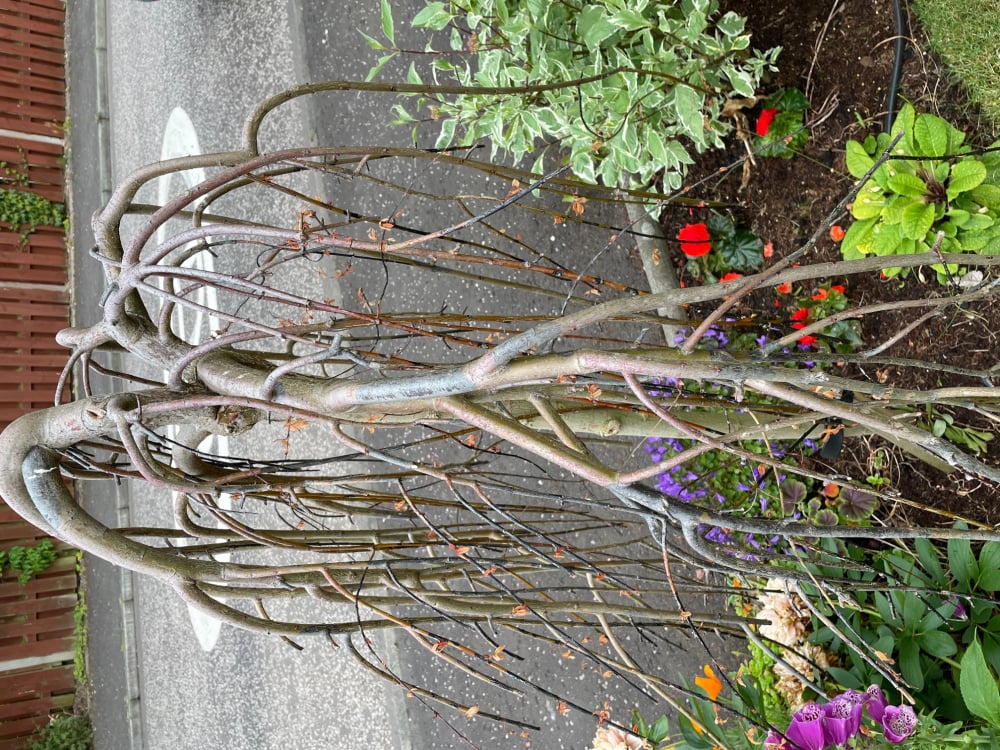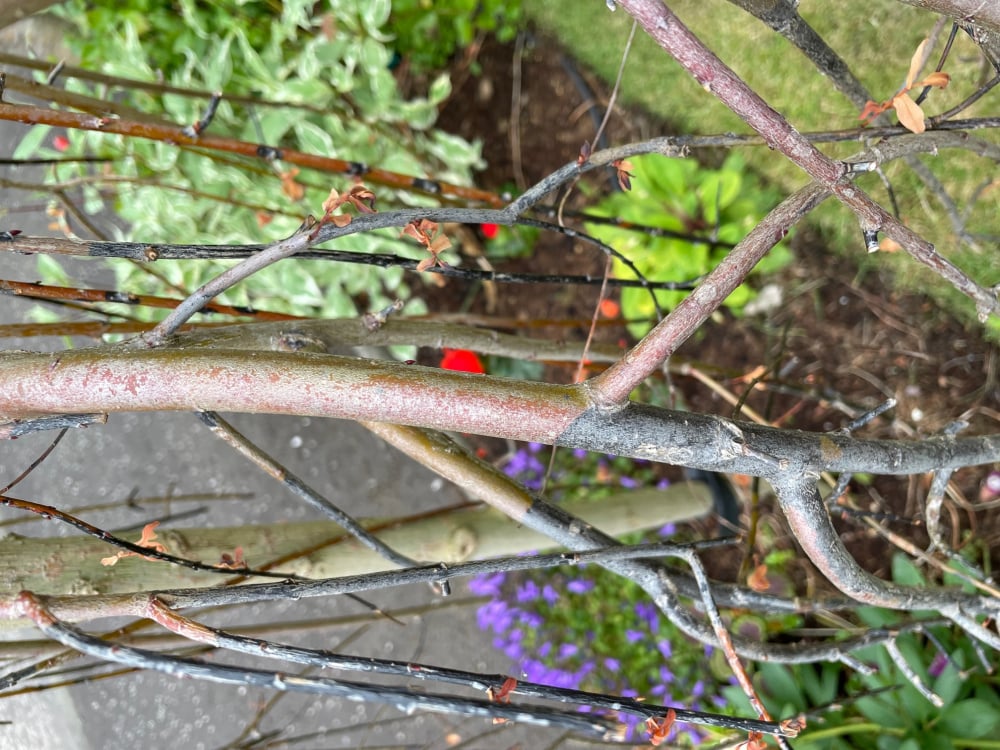This Forum will close on Wednesday 27 March, 2024. Please refer to the announcement on the Discussions page for further detail.
Black stems and blotches on Kilmarnock type willow
We have a Willow tree, similar to a kilmarnock willow, about 1 m high and it has been planted about 2 years. It started to come into leaf ok and then the leaves shrivelled and dropped, some of the thinner stems then turned totally black. I pruned these all off but now the thicker branches are getting black blotches on them with no thickening in these areas. I had scraped the bark with my finger nail in a couple of small not black areas it is still green underneath. Is there anything that can be done or is the tree now doomed? No leaves at all now and black blotches growing in size and number daily. It is planted in a border next to a lawn where all the other plants are thriving. The location is east central Scotland so not the wettest place in the UK but far from the driest. There was previously another tree in this location that was removed as it was getting too big, the stump and roots were removed leaving a good size hole to plant the willow into. 



0
Posts
https://forum.gardenersworld.com/discussion/1066142/willow-going-black#latest
Gardening in Central Norfolk on improved gritty moraine over chalk ... free-draining.
It's not really a good site for any kind of willow anyway - a very narrow border between a pavement, so the founds of that, and lack of soil lower down, have an impact, and grass - competition for the moisture it needs, plus a lot of other plants nearby vying for that as well.
We had the driest winter here I can ever remember, plus a very dry 8 or 9 months before that, when it would have been establishing, so if it didn't have absolutely loads of water through last year, that could have been a bridge too far for it even before winter. It doesn't suit willow if they don't have room, and moisture retentive soil for the roots, plus enough consistent moisture.
You could cut it back, but they're often grafted plants, and can also look pretty awful when pruned because of how they grow.
I live in west central Scotland - not where that photo is...
I think it would be better to choose something else, but maybe not a tree in those circumstances, especially as you have what looks like a Cornus nearby - those like a fair bit of moisture and room too.
Those Pyrus are better at coping with a drier site. Lovely trees.
I live in west central Scotland - not where that photo is...
Gardening in Central Norfolk on improved gritty moraine over chalk ... free-draining.